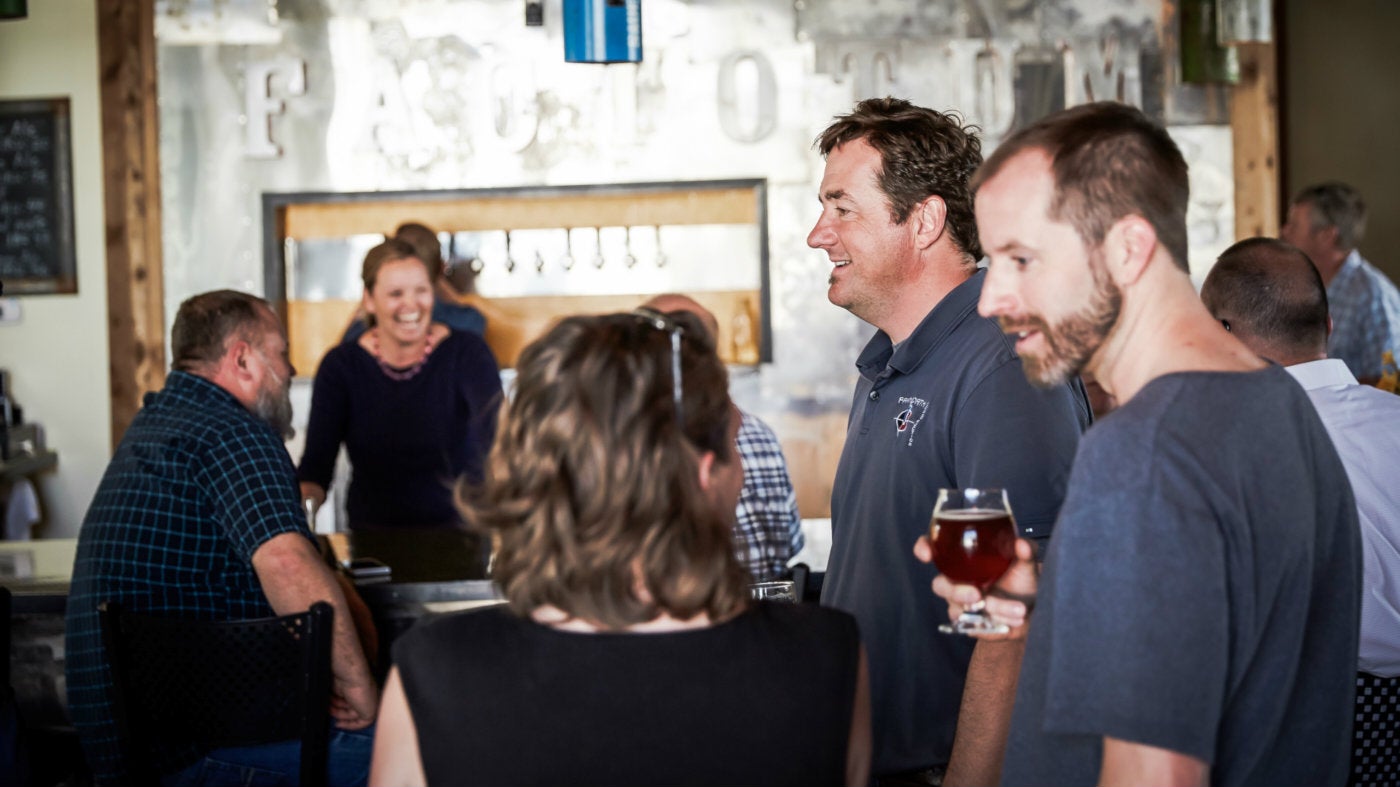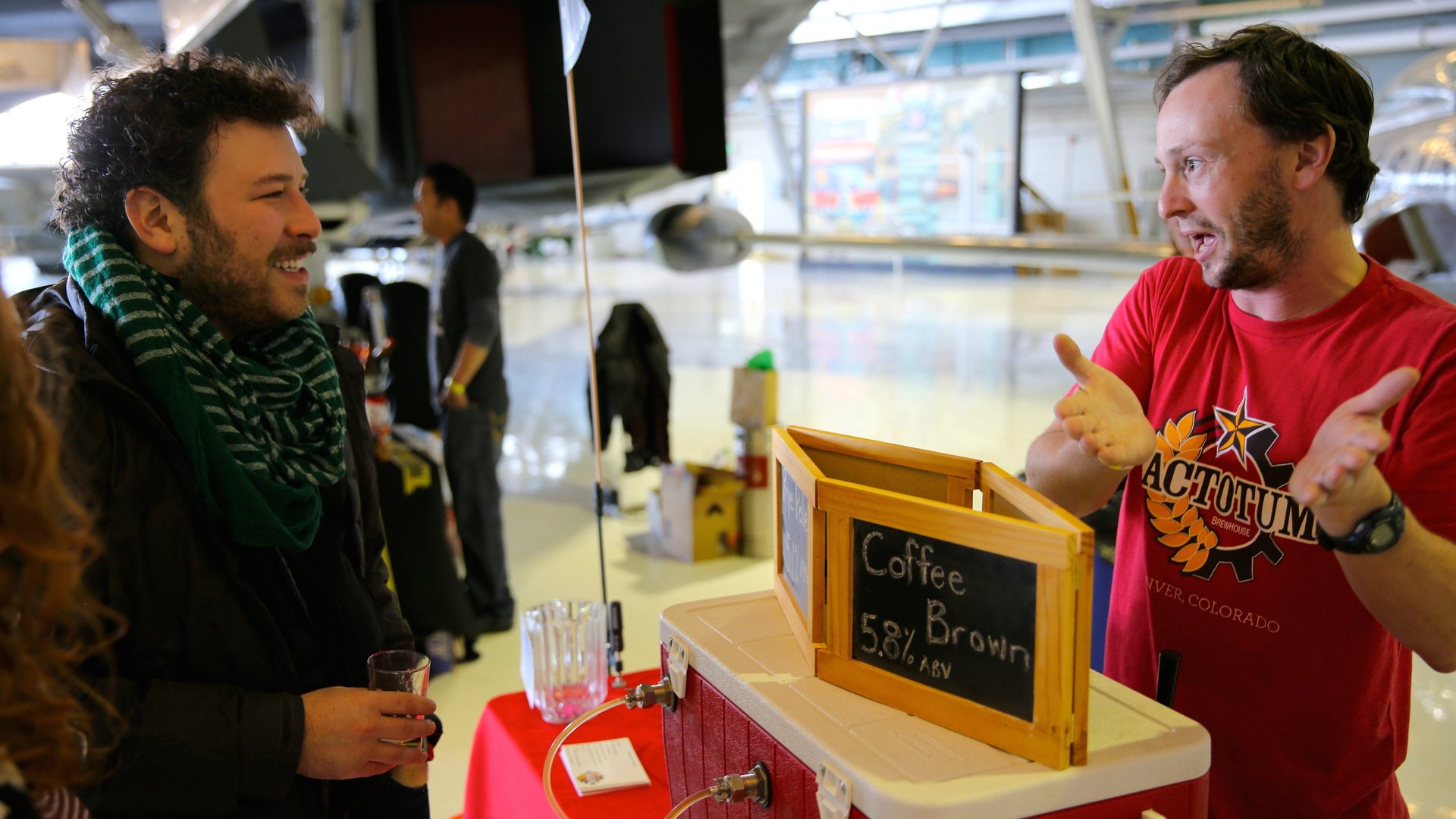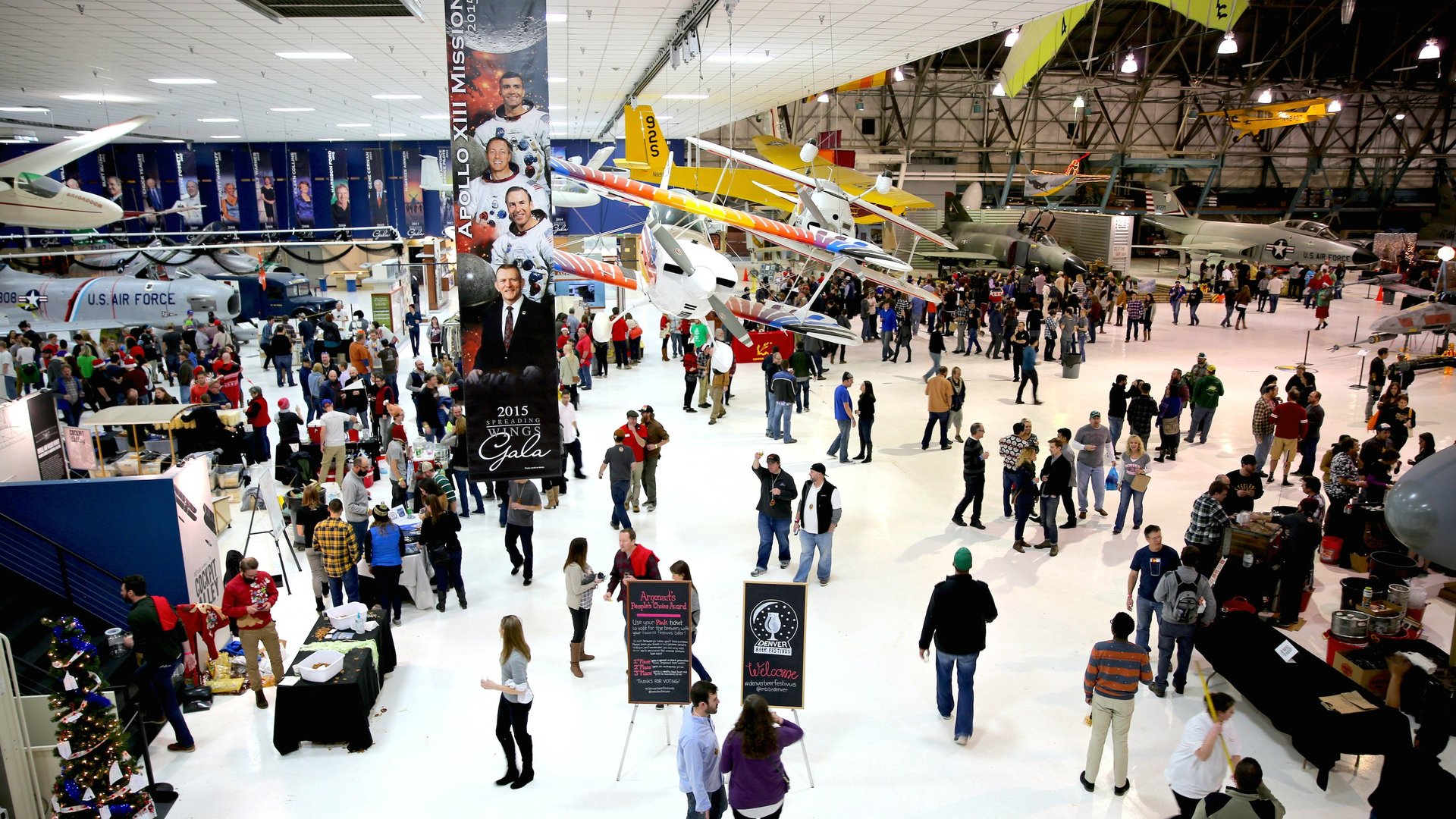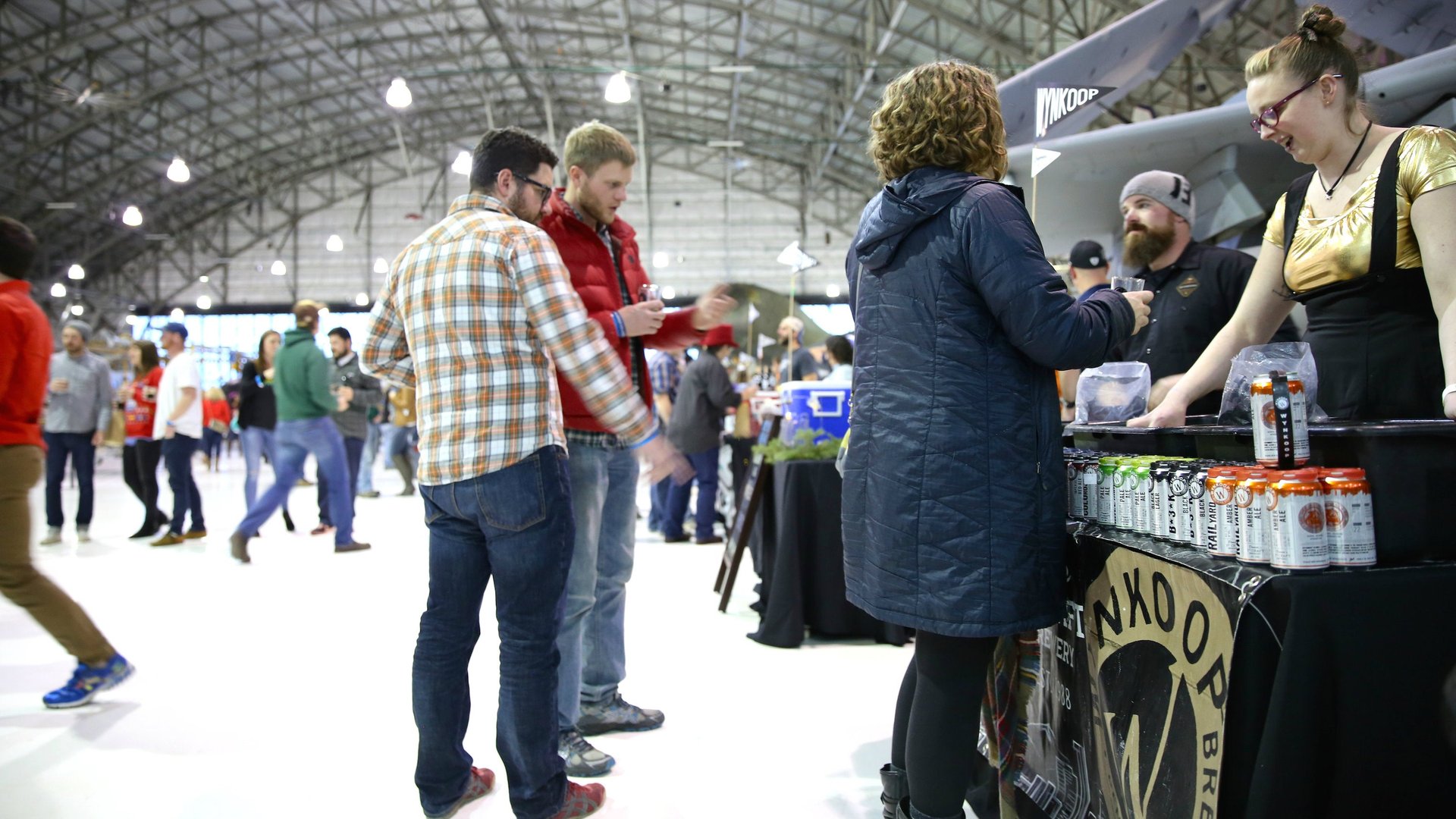Why startup beer brewers are skipping stores and selling directly to locals
With over 4,000 breweries in the US today, shelf space in bodegas, supermarkets, and retail stores has become incredibly precious. Many small breweries are now even having trouble getting their hands on cans to package their beer in the first place. Nowhere is this unsustainable explosion felt more than in beer drenched Denver, Colorado—the capital and most-populated city of the state that leads the nation in craft beer sales per capita. But rather than try to shout over the deafening noise, trailblazing breweries such as Comrade Brewing, Ratio Beerworks, and Spangalang Brewery are speaking calmly and directly to Denverites with a unique, hyper-local business plan that’s being increasingly replicated across the country: to bypass packaging altogether, and cater only to the immediate neighborhood.


With over 4,000 breweries in the US today, shelf space in bodegas, supermarkets, and retail stores has become incredibly precious. Many small breweries are now even having trouble getting their hands on cans to package their beer in the first place. Nowhere is this unsustainable explosion felt more than in beer drenched Denver, Colorado—the capital and most-populated city of the state that leads the nation in craft beer sales per capita. But rather than try to shout over the deafening noise, trailblazing breweries such as Comrade Brewing, Ratio Beerworks, and Spangalang Brewery are speaking calmly and directly to Denverites with a unique, hyper-local business plan that’s being increasingly replicated across the country: to bypass packaging altogether, and cater only to the immediate neighborhood.
“It’s quite profitable to serve beer at $6 a glass, rather than fighting for shelf or tap handle placement…for a much smaller margin,” says Steve Kurowski, marketing director for the Colorado Brewers Guild. With over 17 years of experience in Denver’s craft beer industry, Kurowski, who knows that the profit margin for a packaging brewer could be as low as 8%, is now an outspoken supporter of the direct-to-consumer movement. As he puts it, selling a keg for $150 to a retailer middleman such as a bar simply makes little sense when that same keg can fetch $600 in the brewer’s own tasting room.
This new model also allows brewers to open a business without a ton of capital. “You don’t have to buy a canning or bottling line,” Kurowski explains. “You don’t have to hire a sales rep, a sales manager, a distributor….” After a year or two of serving the neighborhood, some breweries may later decide to distribute kegs to pubs or start bottling—but they are not burdened by the initial expenses of typical production breweries.

However, Chris Bell, co-founder of Denver’s Call To Arms Brewing Co., has no aspirations of ever working with an outside distributor. “If a customer has [your beer] after six weeks of it sitting on a warm shelf, they’ve had a bad experience with your product,” he says of inevitably oxidized bottles. “You have very low quality control as a small packaging brewer.” Instead, Bell and his partners Jesse Brookstein and Jon Cross—two former co-workers at Avery Brewing in Boulder, CO—had a clear, yet unconventional business plan from the start: “We knew we didn’t want to package from day one,” he says. “We didn’t want to be tied to turning tanks and moving through two or three SKUs just so that we could break even. For us it was about giving back to the neighborhood.”
Sounds charming, but try selling that idealistic notion to an investor. “A packaging brewery…is easily scalable,” Bell points out. He continues:
I can just say, “In 20 years, we’re going to be making 100,000 barrels and our EBITA will be 100 grand, and we’re trading on a thirty multiple right now, so there you go: there’s your money.” [The new business plan] is more of a restaurant model: it takes a long time, multiple locations, and a lot of capital.
Yet, despite the seemingly unattractive setup, restaurants are only risky (60% fail within the first three years) because they sell food. “The only margin restaurants have is in alcohol. The food is barely a break-even product, whereas beer has a pretty good margin. So, there’s a way to make money at it,” reasons Bell.
That “way” is to build multiple branded locations throughout the state of Colorado, each of which will serve a selection of house-made draught beer unique to the tastes of its community. Call To Arms opened its first location on Tennyson Street in Denver’s Berkeley neighborhood less than a year ago, having grown an incredibly loyal fanbase ever since.

Because of the vast amount of beer that packaging breweries must make in order to actually turn a profit, such breweries often become slaves to distributor demand for flagship beers. Call to Arms isn’t tied down in the same way. “We’re able to have 15 beers on tap; there aren’t a lot of small packaging breweries that can do that,” says Bell. “The versatility and artistic inventiveness that we’re allowed is unparalleled because we only serve here.” Case in point: Call to Arms recently offered an incredibly rare smoked Hefeweizen. “I mean, I’d never tasted one of those in my life,” Bell admits. “Our goal every week is to have something new and different for you to try.”
Ultimately, the locals decide with their wallets which of these experiments actually work, creating an immediate feedback system that pushes beer innovation ahead more efficiently than ever before. “Coors, Miller, and Budweiser exceed [at] making the same recipe over and over and over to taste exactly the same,” Kurowski acknowledges. “[But] the smallest of brewers are creating this flavor revolution that this country’s totally embracing.” In fact, many of the smallest brewers are responsible for inventing brand new beer styles—black IPAs and barrel-aged lagers, for example—that didn’t exist ten years ago.
Taking local experimentation to a whole new level is Factotum Brewhouse, which invites its customers to brew the beer it serves, a business model that exists nowhere else in the world. At Factotum, everything on tap—except for one year-round house beer (an American pilsner)—is a limited edition recipe whipped up by a patron who has endured a six-month-long waiting list. “When it comes to how good the beer is, that’s my responsibility,” says owner Chris Bruns, who brews with the consumer on site after plenty of consultation. “Some of our best customers are neighborhood folks,” says Bruns. “There’s certainly a lot of pride in that, because they can take their friends to the neighborhood bar and brag about how that’s their beer on the menu.”

Each year, Factotum, Call to Arms, and 60 other Denver breweries from different neighborhoods come together under one roof for an event called Festivus. This year, close to 2,000 beer brewers, writers, and imbibers flocked to a single airplane hangar to taste Denver’s best. PJ Hoberman, co-founder of the events company Two Parts, explains that from the start, the goal of the event was to create a “flight of the Denver beer scene.” For a participating brewer such as Factotum’s Bruns, the appeal of a festival so localized is obvious: at a larger event such as the Great American Beer Festival, attendees come from all across the country. “But when you go to a local festival like Festivus, you know these are all your potential customers,” Bruns says.
But most importantly, Festivus brings the community together in a way that proves that brewing doesn’t incite the same sense of competition as in other cities—or even industries. Locals have their own territorial pride and respect for others throughout the city. “Every brewery is in this game not to dominate and be ‘The One’ brewery in Denver—they just want to be a part of the puzzle,” says Steve Kurowski.

The locally-focused attitude of the city is what supports such a large number of breweries. “People often like to talk about oversaturation of the brewing industry, but…the neighborhood brewery has just taken over the neighborhood bar, and no one’s ever talked about the oversaturation of bars,” says Chris Bruns. “There’s lots of neighborhoods in lots of different cities, and each neighborhood can support a couple different breweries.” Not only is it more convenient to support a local brewery—consumers are tremendously proud of their best local producers.
Brewers should be careful not to take their non-packaging, taproom-only breweries for granted, though, as such a model wasn’t even in the realm of possibility 20 years ago. Great Divide Brewing Company now sells over 40,000 barrels a year—half of which are distributed in over two dozen states—but owner Brian Dunn remembers that when Denver’s first packaging (and now largest) brewery opened in 1994, the landscape was quite different. Four brewpubs existed at the time, and the idea of not tying food service to on-site beer production was unheard of. Meanwhile, existing restaurants had no interest in buying their product. “They would either say, ‘We don’t sell beer, we’re a good restaurant,’ or they’d say ‘We have good beer already: we have Heineken,'” Dunn recalls. Great Divide didn’t open a taproom for thirteen years.
By the time Steve Kurowski started working at Wynkoop in 1999, Denver still only had 12 breweries (nine of which are still open today). “There wasn’t this explosion until… we started seeing small breweries open up to serve neighborhoods. The growth from 12 to 62 operating happened in the last five years.” Though the swell has some people concerned, PJ Hoberman maintains that as long as breweries keep it local, the potential for newcomers is relatively endless. “I think the fears of the [craft beer] bubble bursting come true when all these breweries try and hit regional production level,” he says. “There’s not enough tap or shelf space to handle 60 breweries in one market. But the idea of a neighborhood brewery, just like your neighborhood coffee shop, I think there’s so much room for growth there.”

So how did Denver become such fertile grounds for a flourishing beer culture? Brian Dunn partly credits the spirit of the locals: “People live in Denver because they like to be outside on the weekends…in the mountains; skiing; on the water; hiking; camping,” he says. “I think that people who appreciate good quality of life have similar backgrounds to people that are drinking good craft beer—and like good food, and fresh baked breads, and locally roasted coffees.” In other words, outdoor and artisanal interests go hand in hand. Meanwhile, PJ Hoberman points out that while Denverites might favor conveniently-located breweries, they are also prone to exploring. “[We have] running clubs that run fifteen miles to try out a new brewery…. Also, the number of people moving here every day right now is insane. Transplants have that mentality of, ‘Go try something new!'”
Now, beer drinkers are supporting local darlings in other parts of the country, too, as in the Northwest, California, Michigan, and even New York. ”This is happening in states that allow this legally,” says Kurowski. “If you go to Texas [or] Utah, there are so many restrictions, you’re not able to sell your own beer that you brew—you have to sell it to a distributor at wholesale cost. You’re seeing it in those states where it’s legal, especially in the ones that love craft beer. The reason it’s working in Denver is because craft beer is so wildly accepted in this state and the city.”
Perhaps most excitingly, neighborhood breweries are strengthening the communities in which they thrive by turning citizens and local businesses on to delicious, well-made beer. Restaurants and liquor stores take notice of craft beer’s popularity, and begin incorporating better brews on their menus and in their inventories. And on a social level, taprooms—much like pre-prohibition bars, or London pubs—have given people places to commune with friends once again, inspiring more “sessionable” beers (with less alcohol) and casual daytime drinking. “If a neighborhood can have a coffee shop, a neighborhood should have a brewery,” reasons Kurowski. “[Customers] are not at these places until midnight—a lot of times they’re there after work for a pint, maybe two—and then they go home for dinner, to their families, and get on with their evening. The breweries don’t consume the neighborhoods—they service them.”
While their businesses benefit the community, the brewery owners benefit too, of course—and not only financially. “They’re trying to live the American dream and start their own company,” Kurowski says. “This gives them the opportunity [to do so], no matter if they’re going to brew 50 barrels a year, or 50,000 barrels a year. At least it’s their brewery.”